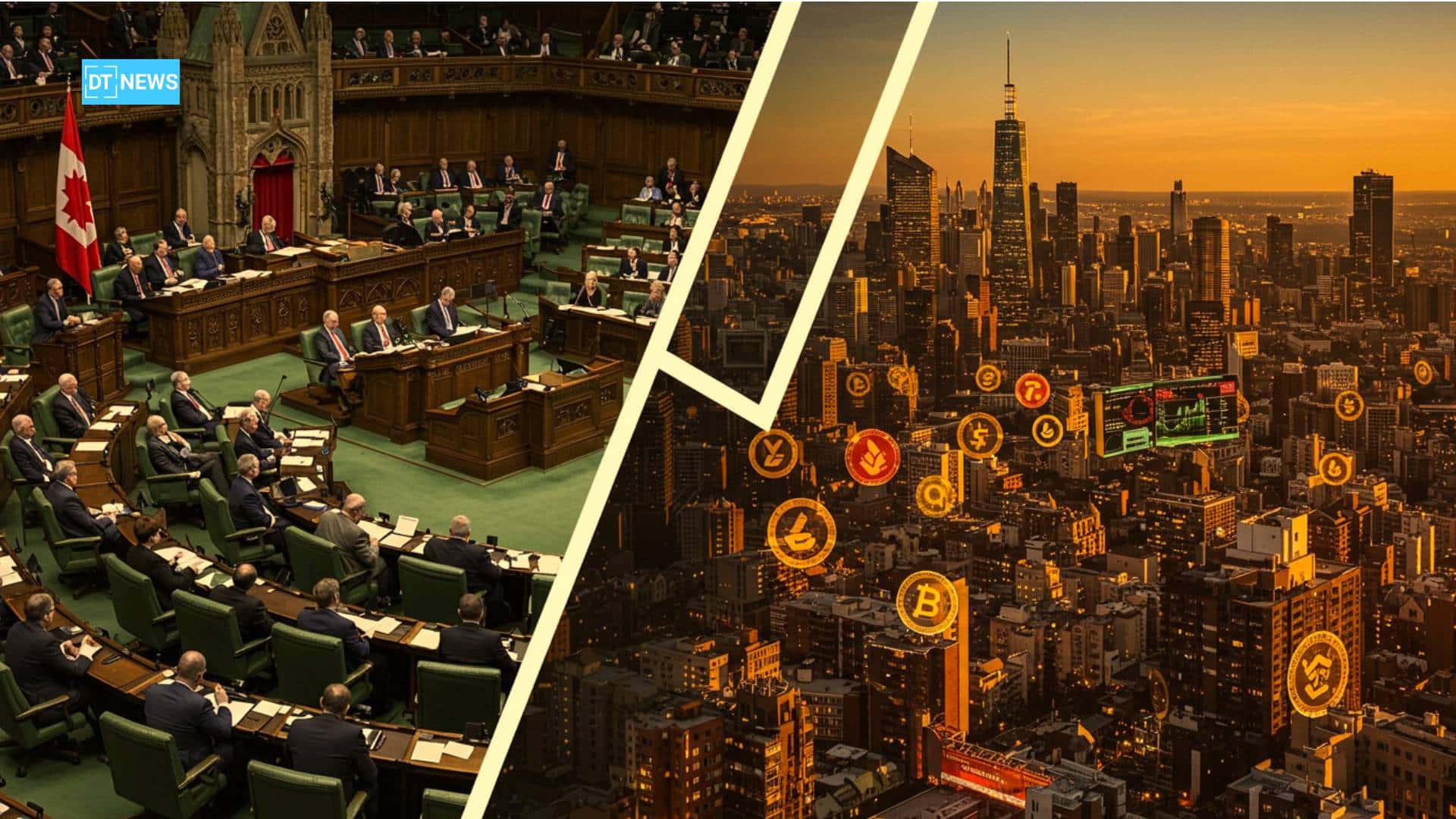After the 2025 federal election, Canada’s political environment changed, yet cryptocurrency regulations remain unclear. Federal regulators maintain their differences with crypto advocates while the Liberal Party under Mark Carney holds a new seat in power. Business leaders monitor official government decisions regarding the potential modification or defense of Canada’s current rigid cryptocurrency regulations.
Canada Maintains Strict Bitcoin Regulatory Stance
The leading cryptocurrency in Canada remains Bitcoin, but its operations exist within strict regulatory frameworks. During the previous term, Conservatives advocated for Bitcoin to be defined as a commodity for better legal innovation capabilities. Both the Liberal majority and government stake out diverse positions regarding Bitcoin oversight and cryptocurrency classification. They retain the position that Bitcoin counts as a security.

This definition under Canadian law hinders new developments in the crypto space, mainly because startups need less regulatory scrutiny. The modern administration carefully approaches Bitcoin regulation because it views consumer protection as more important than marketplace autonomy. The Canadian policy framework is a barrier that prevents developers from introducing new products or increasing their Canadian operations.
Pierre Poilievre endorsed Bitcoin as inflation protection from his position as Conservative leader, but Liberal authorities refused this approach because of Bitcoin’s price fluctuations. The Bitcoin price decline after his 2021 endorsements caused the critics to become more severe. Market recovery has not erased the memory of past losses, leading to the current policy of caution.
Ethereum Struggles Under Canada’s Crypto Policy
With its smart contract functionality, Ethereum has encountered doubt from legal authorities regarding its speculative applications. Canadian regulatory organizations pay close attention to decentralised financial applications because they see risks of fraud and lost capital as potential issues. The intense regulatory attention surrounding Ethereum-based enterprise operations significantly decreases their ability to gain financial institution trust.

Ethereum should expect tighter regulatory oversight since the Liberals maintain their parliamentary dominance. Traditional financial systems receive priority from the government as they pursue digital currency programs that resemble European standards. The regulatory relationship between Ethereum and regulatory frameworks makes it difficult for Ethereum to penetrate established industrial sectors.
The Web3 innovation through Ethereum faces limited backing from Canadian political authorities, which prevents its market development. The U.S. accepted minor regulatory changes to Ethereum, but Canada selected more protective regulatory measures instead. The difference in laws could potentially encourage developers to shift their work to locations where regulations enable better opportunities.
Stablecoins Remain a Divisive Topic
The Conservative Party backed stablecoins as an inflation-protection solution and digital payment expansion tool for Canadians. The strength of USD-backed coins became the center of their advocacy effort during periods of economic doubt. From their perspective, the Liberal Party saw U.S.-driven financial tools as endangering Canadian control of their national money systems.
The government demonstrates its dedication to central bank digital currencies (CBDCs) because it aims to create a self-governing financial system. Central banks control CBDCs, giving countries sovereign authority to manage their monetary policies. The Liberals prefer this model since the United States stopped its CBDC development due to privacy dilemmas.
The real advantages of stablecoins face resistance because of political challenges to their widespread adoption. Foreign interferences along with privacy-related issues continue to be significant barriers toward adoption. The absence of bipartisan agreement between political parties will maintain strict regulations on stablecoins in the Canadian market throughout the forthcoming period.
FAQs
What will happen to Canada’s crypto laws now?
The Liberal government will likely maintain strict oversight, limiting growth opportunities for crypto startups and platforms.
Can Canadian developers work on crypto legally?
Yes, but they face complex regulatory hurdles that discourage innovation and may push some projects abroad.
Is the government considering a national cryptocurrency?
The Liberals support exploring a Canadian central bank digital currency aligned with European-style regulations.
Will Bitcoin be reclassified as a commodity?
No changes are expected soon, as the Liberals prefer to keep it under securities law for investor protection.
Are stablecoins legal in Canada?
Yes, but they are regulated tightly, and their use remains limited due to national security and monetary concerns.
Glossary of Key Terms
Bitcoin: A decentralized digital currency not controlled by any central bank.
Ethereum: A blockchain platform that supports smart contracts and decentralized applications.
Stablecoin: A type of cryptocurrency pegged to a stable asset, like the U.S. dollar.
CBDC: Central Bank Digital Currency; a digital version of a country’s fiat currency issued by its central bank.
Commodity: A basic good used in commerce that is interchangeable with others of the same type.
Security: A financial asset that holds value and can be traded, often regulated by national financial authorities.
Decentralized Finance (DeFi): Financial services built on blockchain technology without traditional intermediaries like banks.
Smart Contract: A self-executing digital contract with the terms directly written into code.
Web3: The next evolution of the internet, emphasizing decentralization, blockchain, and user control of data.
Inflation: The rate at which the general level of prices for goods and services rises over time.



















































































































